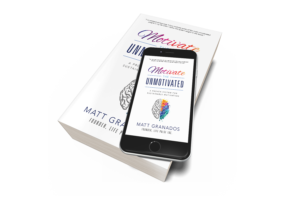In recent years, the investment landscape has undergone a significant transformation with the rise of cryptocurrencies as a new asset class. As investors seek to diversify their portfolios and capture the potential returns offered by digital currencies, the question of how to rebalance portfolios to incorporate cryptocurrencies alongside traditional assets has become increasingly important. This article aims to explore the challenges and opportunities of rebalancing portfolios with a mix of crypto and traditional assets.
The Evolution of Cryptocurrencies
Cryptocurrencies such as Bitcoin, Ethereum, and others have gained mainstream attention over the past decade as a new form of digital money. Born out of the desire for decentralized and borderless transactions, cryptocurrencies have disrupted traditional financial systems and sparked a wave of innovation in blockchain technology. The rapid rise in the value of cryptocurrencies has attracted a wide range of investors, from retail traders to institutional players, looking to capitalize on the potential for outsized returns.
The Role of Traditional Assets
Traditional assets such as stocks, bonds, and real estate have long been the cornerstone of investment portfolios, offering stability, income, and growth potential over the long term. These assets are typically less volatile than cryptocurrencies and provide diverse sources of returns that can help mitigate risk. However, in an era of low interest rates and market uncertainty, investors are increasingly looking to alternative assets such as cryptocurrencies to enhance their portfolio returns and diversification.
Challenges of Rebalancing Portfolios with Crypto
One of the key challenges of rebalancing portfolios with cryptocurrencies is the high volatility and correlation of these assets. Cryptocurrencies are known for their wide price swings, which can lead to rapid fluctuations in portfolio values. This volatility can make it challenging to maintain target asset allocations and risk levels, as cryptocurrencies may outperform or underperform traditional assets unexpectedly.
Moreover, the correlation between cryptocurrencies and traditional assets is often low or negative, meaning that holding a mix of crypto and traditional assets may not provide the diversification benefits that investors seek. In times of market stress or economic uncertainty, correlations between different asset classes tend to increase, leading to synchronized losses across the portfolio. This lack of diversification can amplify the impact of market downturns on overall portfolio performance.
Opportunities for Rebalancing Portfolios with Crypto
Despite the challenges, there are several opportunities for rebalancing portfolios with a mix of crypto and traditional assets. First and foremost, cryptocurrencies offer unique return potential that is not available in traditional asset classes. By incorporating cryptocurrencies into a portfolio, investors can access new sources of alpha and diversify their sources of returns.
Secondly, rebalancing portfolios with cryptocurrencies can enhance portfolio efficiency and risk-adjusted returns. Cryptocurrencies have shown low correlation with traditional assets in the long term, meaning that they can act as an effective diversifier when combined with stocks, bonds, and other assets. By rebalancing portfolios to include an optimal mix of crypto and traditional assets, investors can achieve a more resilient and balanced portfolio that can weather market turbulence.
Strategies for Rebalancing Portfolios
There are several strategies that investors can use to rebalance portfolios with cryptocurrencies effectively. One approach is to set target asset allocations for each asset class based on the investor’s risk tolerance and return objectives. By periodically rebalancing the portfolio to maintain these target allocations, investors Luna Max Pro can ensure that their risk exposure remains within acceptable limits and that they are positioned to capture potential gains from different asset classes.
Another strategy is to use dynamic asset allocation techniques that take into account the changing market conditions and economic outlook. By incorporating market signals and indicators into the rebalancing process, investors can adjust their portfolio allocations in response to changing market dynamics and asset valuations. This dynamic approach can help investors capture opportunities and manage risks more effectively in a fast-paced and uncertain market environment.
Conclusion
In conclusion, rebalancing portfolios with a mix of crypto and traditional assets presents both challenges and opportunities for investors. While the high volatility and correlation of cryptocurrencies can make portfolio rebalancing more complex, the unique return potential and diversification benefits of crypto assets make them an attractive addition to an investment portfolio. By adopting thoughtful strategies and techniques for rebalancing portfolios, investors can harness the strengths of both crypto and traditional assets to achieve a more resilient and balanced investment portfolio.



